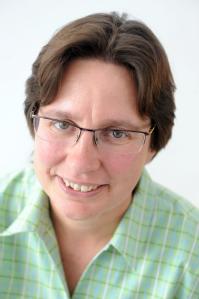Lack of stem cells to blame for recurrent miscarriages
- New University of Warwick research indicates cause of recurrent miscarriage
- Stem cell research to start to help end heartache for thousands of women
Scientists at the University of Warwick have discovered that a lack of stem cells in the womb lining is causing thousands of women to suffer from recurrent miscarriages.
The academics behind the breakthrough are now to start research into a treatment which they believe could bring hope to those who have suffered failed pregnancies.
Professor Jan Brosens, Professor of Obstetrics & Gynaecology at Warwick Medical School at the University of Warwick, and Consultant in Reproductive Health atUniversity Hospitals Coventry and Warwickshire NHS Trust , led the team who unearthed the link between stem cells and miscarriage. He said: “We have discovered that the lining of the womb in the recurrent miscarriage patients we studied is already defective before pregnancy.
“I can envisage that we will be able to correct these defects before the patient tries to achieve another pregnancy. In fact, this may be the only way to really prevent miscarriages in these cases.”
The team found a shortfall of stem cells is the likely cause of accelerated ageing of the lining of the womb which results in the failure of some pregnancies.
Miscarriage is the most common cause of loss; between 15-25% of pregnancies end in miscarriage and one in 100 women trying to conceive suffer recurrent miscarriages, defined as the loss of three or more consecutive pregnancies.
The study, which is a collaboration between the University’s Warwick Medical School and Warwick Systems Biology Centre, has been published in the journal Stem Cells.
Miscarriage is the most common cause of loss; between 15-25% of pregnancies end in miscarriage and one in 100 women trying to conceive suffer recurrent miscarriages, defined as the loss of three or more consecutive pregnancies.
The researchers examined tissue samples from the womb lining, donated by 183 women who were being treated at the Implantation Research Clinic, University Hospitals Coventry and Warwickshire NHS Trust.
The team found that an epigenetic signature – which is typical of stem cells - was absent in cultures established from womb biopsies taken from women suffering recurrent miscarriages. Indeed, fewer stem cells could be isolated from the lining of the womb from recurrent miscarriage patients when compared to women in the study’s control group.
The researchers further found that a stem cell shortage accelerates cellular ageing in the womb. The lining has to renew itself each cycle, each miscarriage and successful birth. This renewal capacity is dependent on resident stem cell population. A shortage of these stem cells in patients suffering recurrent loss is associated with accelerated ageing of the tissue. Ageing cells mount an inflammatory response, which may facilitate implantation of an embryo but is detrimental for its further development.
Professor Brosens added: “After an embryo has implanted, the lining of the uterus develops into a specialised structure called the decidua, and this process can be replicated when cells from the uterus are cultured in the lab.
“Cultured cells from women who had had three or more consecutive miscarriages showed that ageing cells in the lining of the womb don’t have the ability to prepare adequately for pregnancy.”
Co-author of the study is University of Warwick Professor of Obstetrics and Honorary Consultant at University Hospital Coventry and Warwickshire NHS trust Siobhan Quenby. She said: “The real challenge now is to develop strategies to increase the function of stem cells in the womb lining.
“We will start piloting new interventions to improve the lining of the womb in the spring of 2016. Our focus will be two-fold. First, we wish to improve the screening of women at risk of recurrent miscarriage by developing new endometrial tests. Second, there are a number of drugs and other interventions, such as endometrial ‘scratch’, a procedure used to help embryos implant more successfully, that have the potential to increase the stem cell populations in the womb lining.”
The research was funded by the Genesis Research Trust and the Biomedical Research Unit in Reproductive Health, a joint initiative between Warwick Medical School and University Hospitals Coventry and Warwickshire NHS Trust.
The University of Warwick has been selected to be a partner in the largest miscarriage research centre in Europe. Funded by the leading pregnancy charity, Tommy’s, the University’s researchers will be joining doctors from University Hospital, Coventry to investigate the causes of early miscarriage. The research centre will open in April 2016.
8th March 2016
Notes to Editors
Loss of Endometrial Plasticity in Recurrent Pregnancy Loss
Stem Cells, Volume 34, Issue 2, pages 346–356, February 2016
DOI: 10.1002/stem.2222
http://onlinelibrary.wiley.com/doi/10.1002/stem.2222/abstract
Authors: Jan J. Brosens, Division of Reproductive Health, Clinical Science Research Laboratories, Warwick Medical School, University of Warwick; Emma S. Lucas, Division of Reproductive Health, Clinical Science Research Laboratories, Warwick Medical School, University of Warwick; Nigel P. Dyer, Warwick Systems Biology Centre, University of Warwick; Keisuke Murakami, Division of Reproductive Health, Clinical Science Research Laboratories, Warwick Medical School, University of Warwick; Yie Hou Lee, Interdisciplinary Research Groups of BioSystems and Micromechanics, and Infectious Diseases, Singapore-MIT Alliance for Research and Technology, Singapore; Wah Chan, Warwick Systems Biology Centre, University of Warwick; Giulia Grimaldi, Warwick Systems Biology Centre, University of Warwick; Joanne Muter, Division of Reproductive Health, Clinical Science Research Laboratories, Warwick Medical School, University of Warwick; Paul J. Brighton, Division of Reproductive Health, Clinical Science Research Laboratories, Warwick Medical School, University of Warwick; Jonathan D. Moore, Warwick Systems Biology Centre, University of Warwick; Gnyaneshwari Patel, Division of Reproductive Health, Clinical Science Research Laboratories, Warwick Medical School, University of Warwick; Jerry K.Y. Chan, Department of Reproductive Medicine, KK Women's and Children's Hospital, Singapore; Satoru Takeda, Department of Obstetrics and Gynaecology, Juntendo University Faculty of Medicine, Tokyo; ,Eric W-F. Lam, Department of Surgery and Cancer, Imperial College London, Imperial Centre for Translational and Experimental Medicine (ICTEM); Siobhan Quenby, Division of Reproductive Health, Clinical Science Research Laboratories, Warwick Medical School, University of Warwick; Sascha Ott, Warwick Systems Biology Centre, University of Warwick.
The University of Warwick runs a dedicated miscarriage clinic - information can be found: http://www2.warwick.ac.uk/fac/med/research/tsm/bru/
Additional support for anyone affected by miscarriage is provided by the Miscarriage Association: http://www.miscarriageassociation.org.uk/ It was founded in 1982 by a group of people who had experienced miscarriage and they continue to offer support and information to anyone affected by the loss of a baby in pregnancy, to raise awareness and to promote good practice in medical care.
To contact the Miscarriage Clinic at the Biomedical Research Unit in Reproductive Health email Kerri.geraghty@uhcw.nhs.uk or call 024 769 67528
For media enquiries please contact Nicola Jones, Communications Manager, University of Warwick 07920531221 or N.Jones.1@warwick.ac.uk


